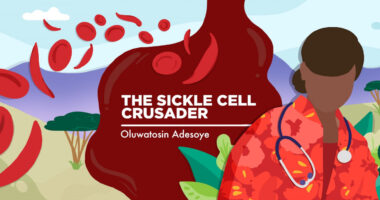Psychological Factors Can Affect Pain Sensitivity in Pediatric SCD Patients, Study Finds

Several psychological factors such as depression, anxiety, and catastrophizing (believing something is worse than it is) can influence the perception and experience of pain in pediatric patients with sickle cell disease, according to a study published in The Journal of Pain.
Patients with SCD can suffer acute episodes of pain due to occlusion of blood vessels (vasocclusion). These events start at a young age and usually cause severe pain, in some cases requiring medical intervention and opioid medication.
Vasocclusion-associated pain is considered as a typical event of SCD. There have been reports of patients whose pain transitions from an acute event to a chronic condition.
Although it is not clear what causes this transition, as in many other chronic pain conditions, it is believed that several biological, genetic, psychological, and social factors may contribute.
Central sensitization, which is defined as an abnormal increase in responsiveness of central nervous system neurons, has been implicated in the mechanism responsible for chronic pain in several medical conditions such as fibromyalgia, headaches, post-surgical pain, and others.
It is unclear if central sensitization is implicated in SCD. Response to experimental pain using quantitative sensory testing (QST) methods can shed light on the mechanisms of chronic pain in SCD.
In the study titled, “Psychological Characteristics and Pain Frequency Are Associated with Experimental Pain Sensitivity in Pediatric Patients with Sickle Cell Disease,” the authors applied several QST to children with SCD to attempt to identify factors involved in pain episodes.
A total of 29 patients with SCD and 26 healthy sex- and age-matched controls were included in the study.
Results from the psychological evaluation of all participants did not denote any differences between the two groups. Still, when exposed to experimental pain, psychological factors such as depression, anxiety, and catastrophizing showed a direct association with pain sensation in children with SCD, but not in the control group.
“These data are the first such reported associations in the literature and suggest that mood may differentially impact pain sensitivity in children with SCD,” the authors wrote.
Overall, children in both groups presented increased pain tolerance with age. However, this relationship was not found between age and QST metrics in SCD patients. Additionally, a recent history (at least three years) of more frequent pain episodes was found to be associated with increased tolerance to pain caused by heat stimuli.
These results highlight the complexity and heterogeneity of SCD pain, suggesting that many of the studies may only be capturing a small fraction of the pain burden in SCD.
“These data suggest that careful consideration be given to psychological factors, age, sex and clinical burden of pain when studying response to experimental pain in SCD,” the authors added.






